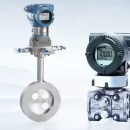Using a Picker Wheel as a Random Name Picker: Smart Tips for Smooth Selections

Introduction
When you need to select individuals fairly, whether in classrooms, workplaces, or family settings, a random name picker offers an unbiased solution. Leveraging an online picker wheel turns this process into an interactive, engaging experience. In this article, we’ll delve into best practices for using a picker wheel as a random name picker, providing smart tips to ensure selections are smooth, transparent, and efficient.
Why Use a Picker Wheel for Name Selection?
Traditional methods, drawing names from a hat or calling volunteers, often lead to perceptions of favoritism or oversight. By contrast, an online picker wheel clearly displays all names on a colorful spinner. When you click “Spin,” the wheel rotates and lands randomly on one name. Participants can see each step, eliminating doubts about the process.
This transparency fosters trust. In a classroom, students know everyone’s equally likely to be chosen. In meetings or team-building events, colleagues see that the selection isn’t influenced by management bias. Using a random name picker via a picker wheel also adds excitement, as watching the wheel spin builds anticipation.
Tip 1: Prepare Your Name List Carefully
Before you start, ensure your name list is accurate. Typos can lead to confusion when the wheel displays an incorrect name. If you’re working with a large group, say, a seminar of fifty participants, double-check spellings and include first and last names if necessary to avoid duplicate entries.
For recurring groups, save a master list in a document or spreadsheet. When you need to spin again, simply copy and paste the names into the picker wheel. This saves time and prevents errors from retyping.
Tip 2: Customize Segment Appearance for Clarity
A visually clear wheel prevents misreads, especially in large rooms or when projecting onto a screen. Choose high-contrast color schemes, dark text on a light background or vice versa. Some picker wheel tools let you alternate segment colors to distinguish adjacent names more easily.
You can also adjust font size and style. If multiple names are long, like full names or descriptive labels, ensure the font is large enough to read from a distance. Some platforms let you shorten names for better fit while adding a legend elsewhere with full details.
Tip 3: Use the “Remove After Spin” Feature Appropriately
Many picker wheel platforms offer a “remove after spin” option. If you need to ensure each person is chosen only once, such as assigning presentation slots or selecting contestants for a single-round game, enable removal. After the wheel lands on a name, that segment disappears for subsequent spins, reducing wheel clutter and preventing repeats.
However, if your goal is to give everyone multiple chances, say, calling on students repeatedly during discussions, keep the full name list intact. Decide on removal settings based on your selection frequency and fairness needs.
Tip 4: Explain the Process to Participants
Transparency encourages trust. Before spinning, briefly explain that the wheel will randomly choose a name and that every name has an equal chance. Mention whether names will be removed after selection or remain for future spins. This explanation prevents confusion and ensures participants understand that fairness drives the process.
If you’re in a professional meeting, share your screen so remote attendees can watch the wheel spin in real time. Visibility fosters buy-in and eliminates skepticism about outcomes.
Tip 5: Maintain an Organized Spin Log
For record-keeping, especially in educational or organizational contexts, it helps to log each spin’s results. Create a simple spreadsheet with columns for date, time, purpose (e.g., “Class discussion,” “Team presentation”), and selected name. Over time, this log shows who’s been chosen and when. Teachers can track participation equity, while managers can verify fair task assignments.
If your platform doesn’t automatically save spin history, assign a note-taker or designate the spinner to jot down outcomes. Having an organized record prevents accidental repeats and supports accountability.
Tip 6: Incorporate Engaging Sound and Effect Settings
Many online picker wheel tools let you add sound effects or adjust spin duration. For younger audiences, like elementary school students, adding a short drumroll or applause sound makes the selection moment more exciting. In team-building events, a celebratory chime when a name is selected boosts morale. However, avoid overly long spin times or loud sounds if you’re in a serious work meeting; keep it professional yet engaging.
Tip 7: Use Group Categories for Complex Scenarios
When your group consists of subgroups, such as departments, classes, or age brackets, you can set up multiple wheels or categorize names. For example, create a wheel listing department names first. Spin to select which department goes next. Then, load that department’s employee list into a second wheel and spin again to pick an individual. This two-step process maintains organization and ensures you’re selecting from a specific subgroup accurately.
Alternatively, work within one wheel by prefixing names with categories (e.g., “Marketing – Alice,” “Sales – Bob”), then spin to pick directly. Adjust segment colors to differentiate categories visually.
Conclusion
Using a picker wheel as a random name picker brings fairness, transparency, and excitement to selection tasks in classrooms, workplaces, and social events. By preparing accurate name lists, customizing segment appearance, using removal options judiciously, explaining the process, maintaining spin logs, and incorporating engaging effects, you ensure smooth selections every time. Next time you need to choose participants, spin your online picker wheel confidently and watch how seamless and enjoyable fair decision-making can be.
Leave a reply
You must be logged in to post a comment.















